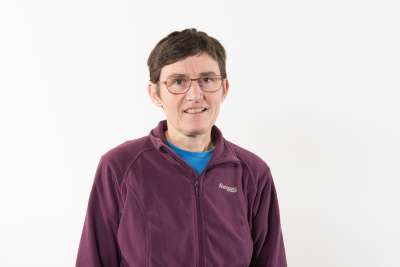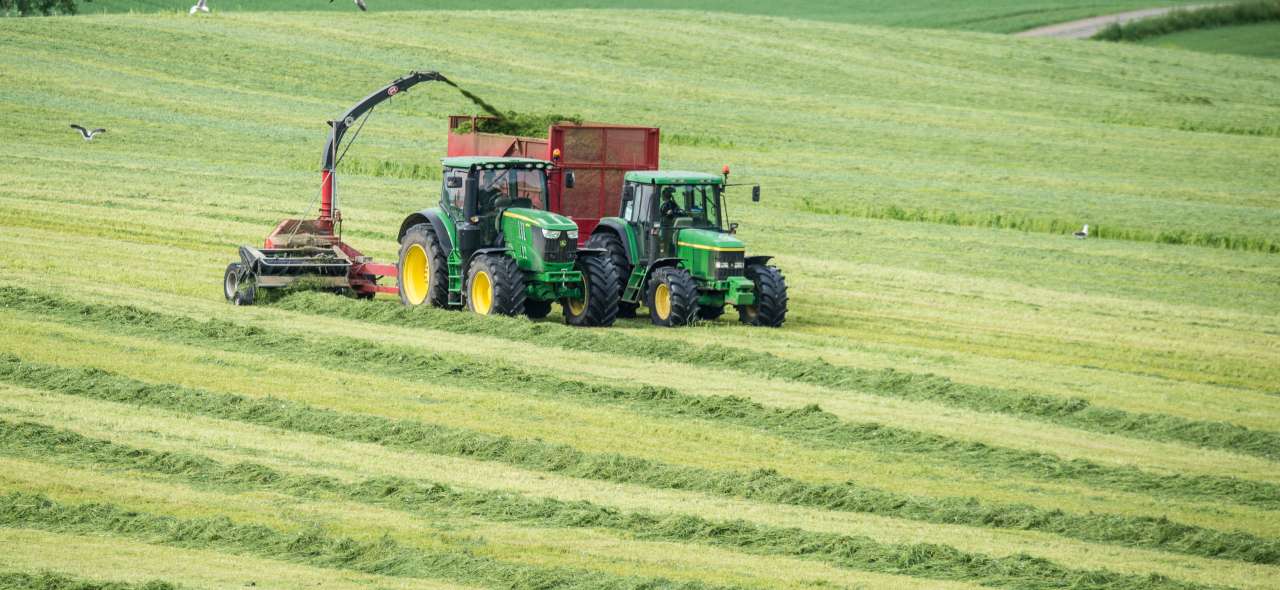
Forage production
Our research includes both organic and conventional production systems, economic, environmental and climate perspective.

To study forage production and production systems under different environmental conditions we combine experimental and theoretical modeling research. Field and greenhouse experiments allow us to study how climate, weather and soil conditions, and cultivation practices, such as fertilization and cutting regimes, influence the growth, development, yield and nutritive value of forage plants.
The Basic Grassland Model (BASGRA) simulates the carbon and nitrogen dynamics of forage grasses, and hereby their growth, yield, nutritive value and nitrogen losses from their production as a function of weather, soil and cultivation practices. This model has been developed by researchers at NIBIO together with international collaborators and applied to increase the knowledge about forage grass production and its role in farming systems under various environmental conditions, climate change projections, and farming practices in Northern.
The Roughage Nutrition Model
In silage production it is important to time harvests according to aimed yield quality and quantity. For decision support for farmers, NIBIO has developed a model that predicts phenological development, growth rate and energy content of timothy according to recorded weather data and weather forecasts for stations distributed all over the country. It works interactively on NIBIO’s web-site, and can be locally calibrated for farmers’ own fields.
Publications
Abstract
Process-based models (PBM) for simulation of weather dependent grass growth can assist farmers andplant breeders in addressing the challenges of climate change by simulating alternative roads of adap-tation. They can also provide management decision support under current conditions. A drawback ofexisting grass models is that they do not take into account the effect of winter stresses, limiting theiruse for full-year simulations in areas where winter survival is a key factor for yield security. Here, wepresent a novel full-year PBM for grassland named BASGRA. It was developed by combining the LIN-GRA grassland model (Van Oijen et al., 2005a) with models for cold hardening and soil physical winterprocesses. We present the model and show how it was parameterized for timothy (Phleum pratense L.),the most important forage grass in Scandinavia and parts of North America and Asia. Uniquely, BASGRAsimulates the processes taking place in the sward during the transition from summer to winter, includ-ing growth cessation and gradual cold hardening, and functions for simulating plant injury due to lowtemperatures, snow and ice affecting regrowth in spring. For the calibration, we used detailed data fromfive different locations in Norway, covering a wide range of agroclimatic regions, day lengths (latitudesfrom 59◦to 70◦N) and soil conditions. The total dataset included 11 variables, notably above-ground drymatter, leaf area index, tiller density, content of C reserves, and frost tolerance. All data were used inthe calibration. When BASGRA was run with the maximum a-posteriori (MAP) parameter vector fromthe single, Bayesian calibration, nearly all measured variables were simulated to an overall normalizedroot mean squared error (NRMSE) < 0.5. For many site × experiment combinations, NRMSE was <0.3. Thetemporal dynamics were captured well for most variables, as evaluated by comparing simulated timecourses versus data for the individual sites. The results may suggest that BASGRA is a reasonably robustmodel, allowing for simulation of growth and several important underlying processes with acceptableaccuracy for a range of agroclimatic conditions. However, the robustness of the model needs to be testedfurther using independent data from a wide range of growing conditions. Finally we show an exampleof application of the model, comparing overwintering risks in two climatically different sites, and dis-cuss future model applications. Further development work should include improved simulation of thedynamics of C reserves, and validation of winter tiller dynamics against independent data.
Abstract
Interactions between soil properties and climate affect forage grass productivity. Dynamic models, simulating crop performance as a function of environmental conditions, are valid for a specific location with given soil and weather conditions. Extrapolations of local soil properties to larger regions can help assess the requirement for soil input in regional yield estimations. Using the LINGRA model, we simulated the regional yield level and variability of timothy, a forage grass, in Akershus and Østfold counties, Norway. Soils were grouped according to physical similarities according to 4 sets of criteria. This resulted in 66, 15, 5 and 1 groups of soils. The properties of the soil with the largest area was extrapolated to the other soils within each group and input to the simulations. All analyses were conducted for 100 yr of generated weather representing the period 1961-1990, and climate projections for the period 2046-2065, the Intergovernmental Panel on Climate Change greenhouse gas emission scenario A1B, and 4 global climate models. The simulated regional seasonal timothy yields were 5-13% lower on average and had higher inter-annual variability for the least detailed soil extrapolation than for the other soil extrapolations, across climates. There were up to 20% spatial intra-regional differences in simulated yield between soil extrapolations. The results indicate that, for conditions similar to these studied here, a few representative profiles are sufficient for simulations of average regional seasonal timothy yield. More spatially detailed yield analyses would benefit from more detailed soil input.


